Studying the nervous system of an adult whale like the one stranded on the beach at Sopela (Bizkaia, Basque Country) is difficult and the chances of doing so are rare. This totally unforeseen event has however opened up a wealth of possibilities, because the UPV/EHU researcher Elena Vecino was able to extract an eye from the marine mammal once it had died, and take it to the laboratories of the Faculty of Medicine and Nursing. There they discovered that fortunately there were still living cells present in the whale’s eye.
-

HiTZ zentroak Latxa hobetu du, euskararentzako hizkuntza eredu handiena, eta dagoeneko gainditu du jatorrizko ChatGPT
-

UPV/EHUk ikasteko gelak jarri ditu azterketa-aldian
-

UPV/EHUk 252 milioi euro lortu ditu azken bost urteetan ikerketa eta transferentziaren bidez
-

Los grandes descubrimientos epigráficos
-
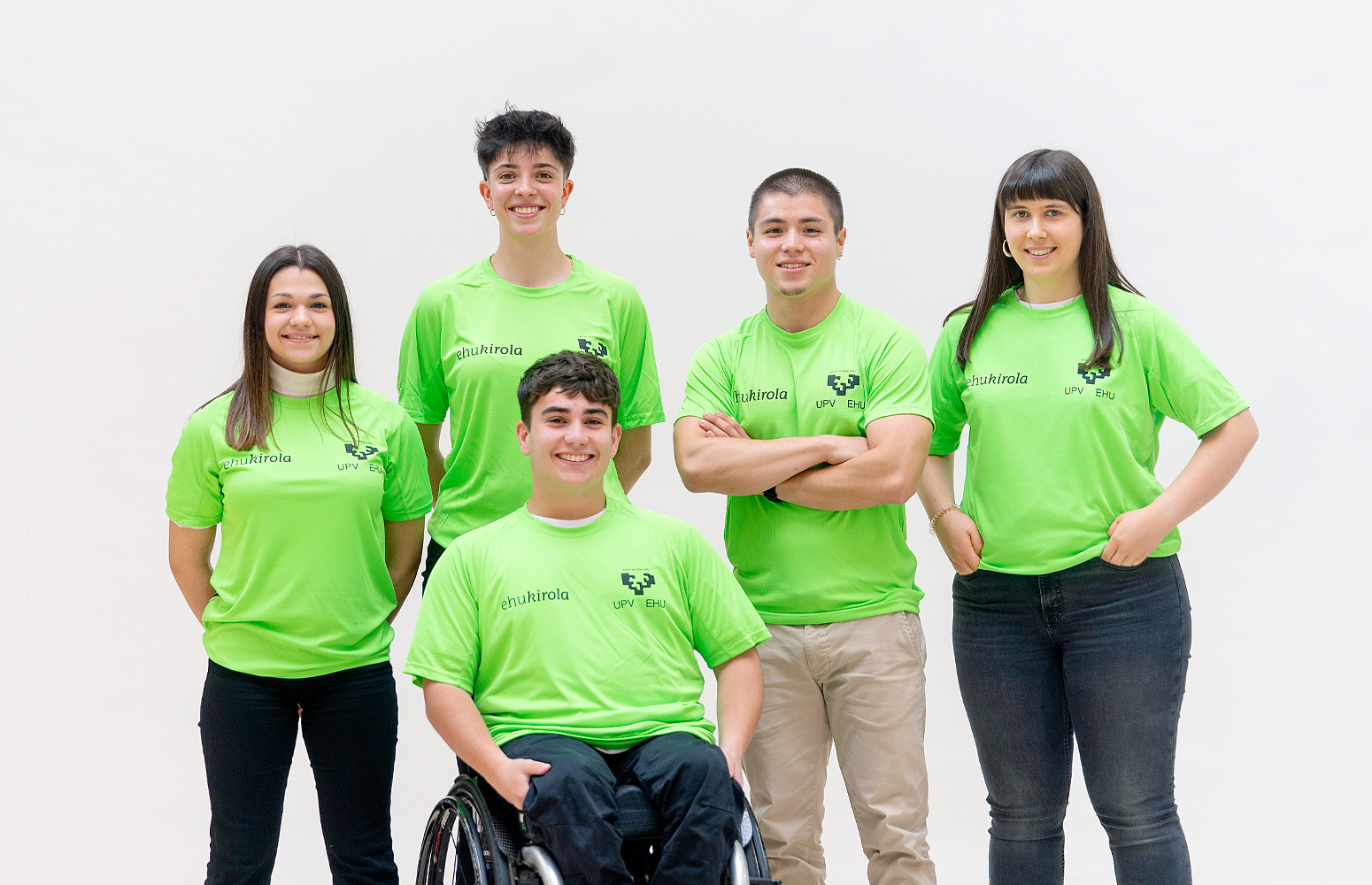
Eliteko kirolariak eta unibertsitatearen enbaxadoreak
A team at the UPV/EHU-University of the Basque Country is cultivating living cells found in the retina of the whale that died on Sopela beach
The group led by Elena Vecino is hoping to expand their knowledge about glaucoma thanks to the study of the structure that protects the eyeball
- Report
First publication date: 15/02/2019
(Opens New Window)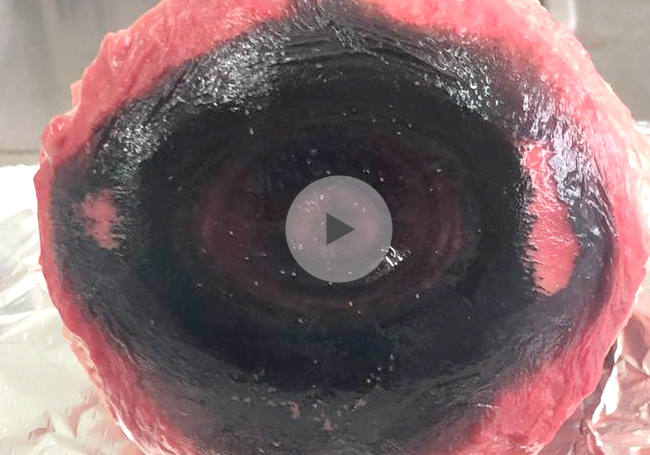
The team led by the Professor of Cell Biology and Histology at the UPV/EHU Elena Vecino salvaged the living neurons of the retina, part of the central nervous system, and are cultivating them and observing their growth. It is a once-in-a-lifetime opportunity. “Until now,” explained Elena Vecino, “general anatomical studies have been conducted, but it has not been possible to obtain a detailed view of a whale’s retina and neuronal cells, the optic nerve or eyelid.” The cultivated neurons are regenerating. “These ganglion cells of the adult retina are growing and emitting axons in our lab, which has expertise in cultivating cells of this type.”
Besides observing the growth of the neurons, the whale’s eye is opening up a wealth of possibilities to find out more about how other species function, about intraocular pressure control, which is one of the causes of glaucoma, and about how the optic nerve and the eyelid function. And it is even possible to get as far as obtaining clues about biomarkers relating to neurodegenerative diseases, such as Alzheimer’s or Parkinson’s.
The dissection
It took Elena Vecino approximately ten minutes to extract the eye from the whale on the sands of Sopela, yet it took an hour to be able to dissect it with the help of the members of the research group Noelia Rurafa, Xandra Pereiro and Miguel de la Fuente. “There was a surprise in store. We did not expect to find the eyeball protected by cartilage and bone mass,” said Elena Vecino. That may be one of the reasons why the eye weighed nearly a kilo.
In any case, the research group suspects that the structure protecting the eyeball is due to the evolutionary adaptation to depths. Elena Vecino pointed out that “this characteristic may be due to the fact that when the whale dives down to 300 metres below the surface, it has to withstand high pressure so it is a way of protecting the eye, and consequently the retina. That is why we believe that studying it will help us to get to know more aspects relating to glaucoma. At the end of the day, this disease is caused by an increase in intraocular pressure”.
Glaucoma is the main line of research developed by the group, but this chance occurrence has opened up the door to analysing the whale’s optic nerve in detail. Elena Vecino explained that “fish can regenerate their optic nerves when they are damaged. In the evolutionary process mammals have lost that regeneration capability. And now we have the possibility of finding out what happens in the case of these mammals that live in the sea". What is more, there is an opportunity to study the internal and external eyelid, its anatomy and its glands.
The death of the marine mammal, which was a totally unforeseen event, the curiosity of the UPV/EHU researcher Elena Vecino and the proximity of the UPV/EHU labs have allowed a range of study possibilities to be opened up. In addition, the presence on the beach of the Ambar Elkartea, an association devoted to the study and conservation of marine fauna, was another factor that helped to salvage the only remaining eye from the whale at Sopela.
This research will be presented on 21 February at the ‘Glaucoma and Optic Nerve Regeneration’ meeting to be held in the Bizkaia Aretoa (Hall) at 15:30. The meeting has been organised by the Experimental Ophthalmic Biology Group (GOBE), and is due to be attended by experts from across the world. The meeting will be attended by Professor Sansar C. Sharma, who will be receiving an Honorary Doctorate the following day, 22 February at 11:30 in the Assembly Hall of the Faculty of Science and Technology (Sarriena district, Leioa). Dr Sharma is not only one of the leading authorities in ophthalmology, he is a pioneer in the study of optical nerve regeneration in fish, neuronal plasticity, and is the first researcher to establish a model of experimental glaucoma.
The Experimental Ophthalmic Biology Group
The Experimental Ophthalmic Biology Group (GOBE) is a multidisciplinary group comprising professionals in the fields of biology, biochemistry, ophthalmology and veterinary science. It aims to resolve visual system problems. It has two main lines of research: glaucoma and tear biomarkers.
With respect to tear biomarkers, right now it is working on the non-invasive detection of neurodegenerative diseases through the identification of these biomarkers. In relation to glaucoma it is exploring its causes, possible neuroprotective therapies and cicatrization mechanisms to prevent surgical failures. The group is trying to detect the molecular reasons why the increase in intraocular pressure kills the neurons responsible for sending messages from the eye to the brain. The ultimate objective is the early detection of retina damage as well as the neuroprotection of retina neurons to prevent sight loss.
Glaucoma is the leading cause of irreversible blindness, it affects over 2% of the world population and is an asymptomatic disease. Over 67 million people across the world are expected to go down with glaucoma and 4.5 million will end up totally blind. It is also estimated that owing to the progressive ageing of the population, nearly 80 million people will go down with glaucoma by 2020. This disease is caused by the increase in intraocular pressure that leads to the death of the ganglion cells of the retina, responsible for sending visual messages from the eye to the brain. Blindness begins in the peripheral area of the field of vision, so it is imperceptible in its early stages.
This consolidated group, which began working 23 years ago, has been recognised as such by the Basque Government, and its members belong to the RETICS network of Centres of the Carlos III Institute for Eye Conditions.
Image gallery
-
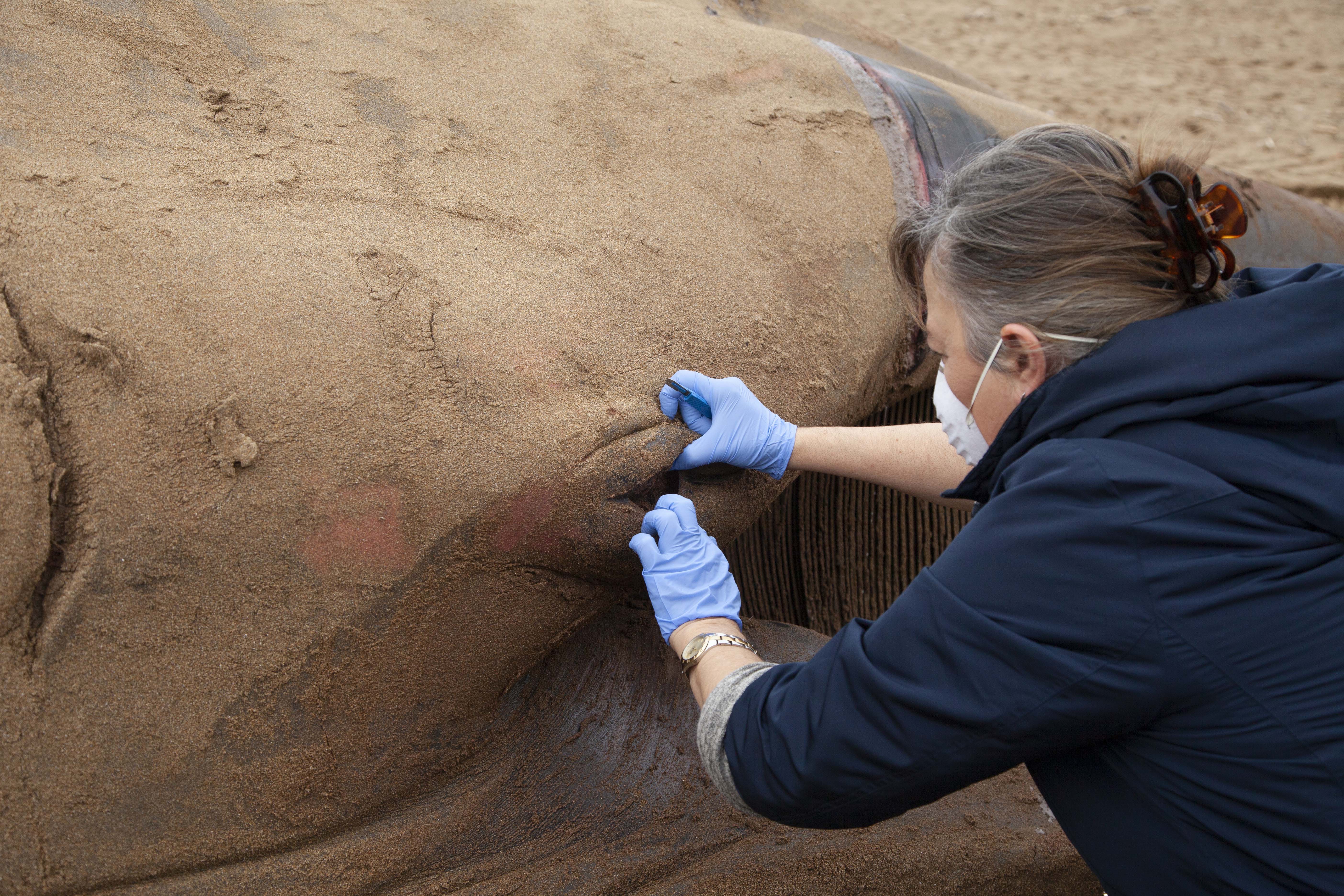
The UPV/EHU researcher Elena Vecino extracted the whale’s eye on the beach at Sopela (Bizkaia) before the animal was removed from the sands. (Photo: Xabier Bañuelos. Ambar Elkartea). -
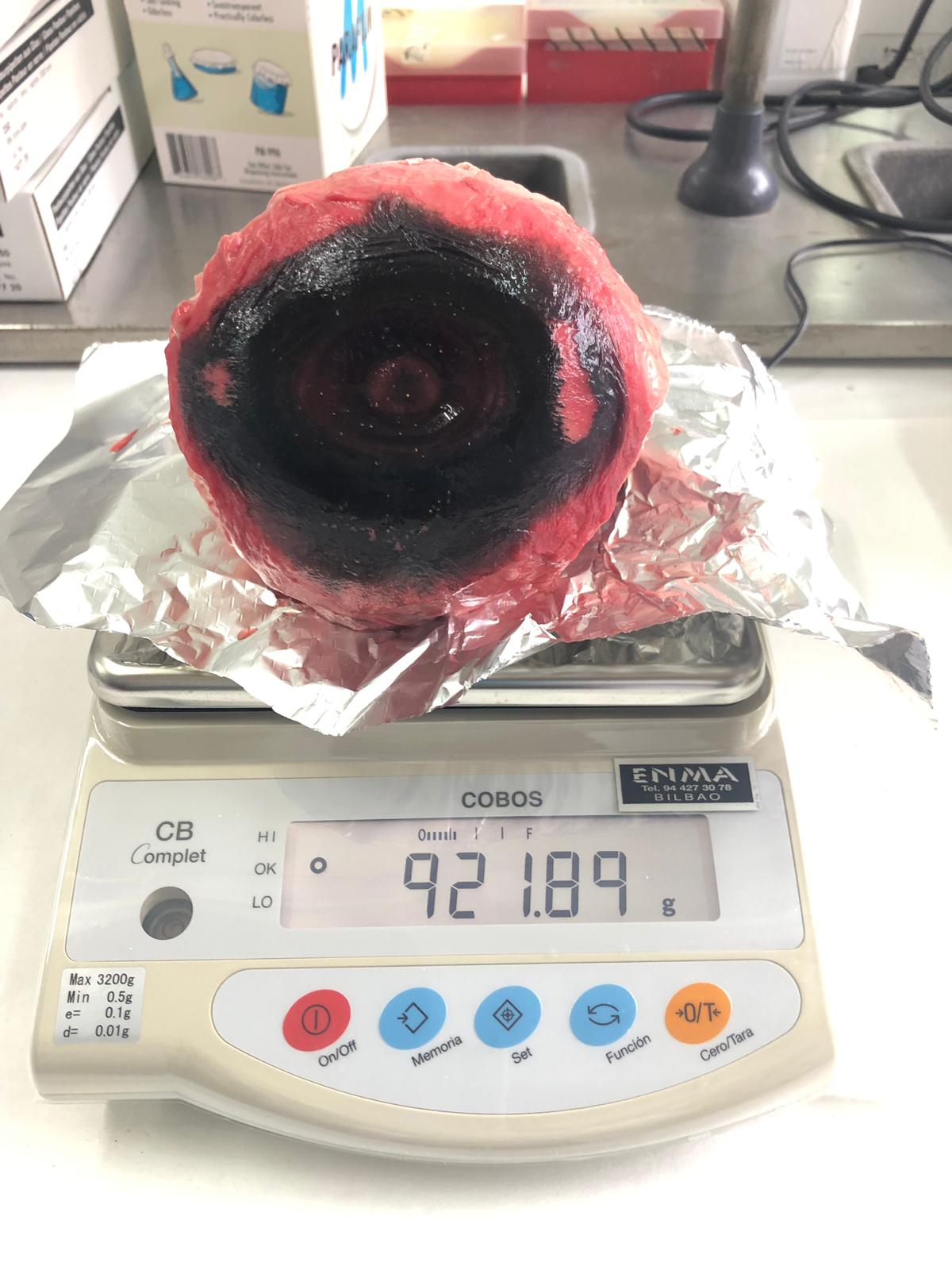
The whale’s eye in the labs of the UPV/EHU’s Faculty of Medicine and Nursing. (Photo: Experimental Ophthalmic Biology Group. UPV/EHU) -
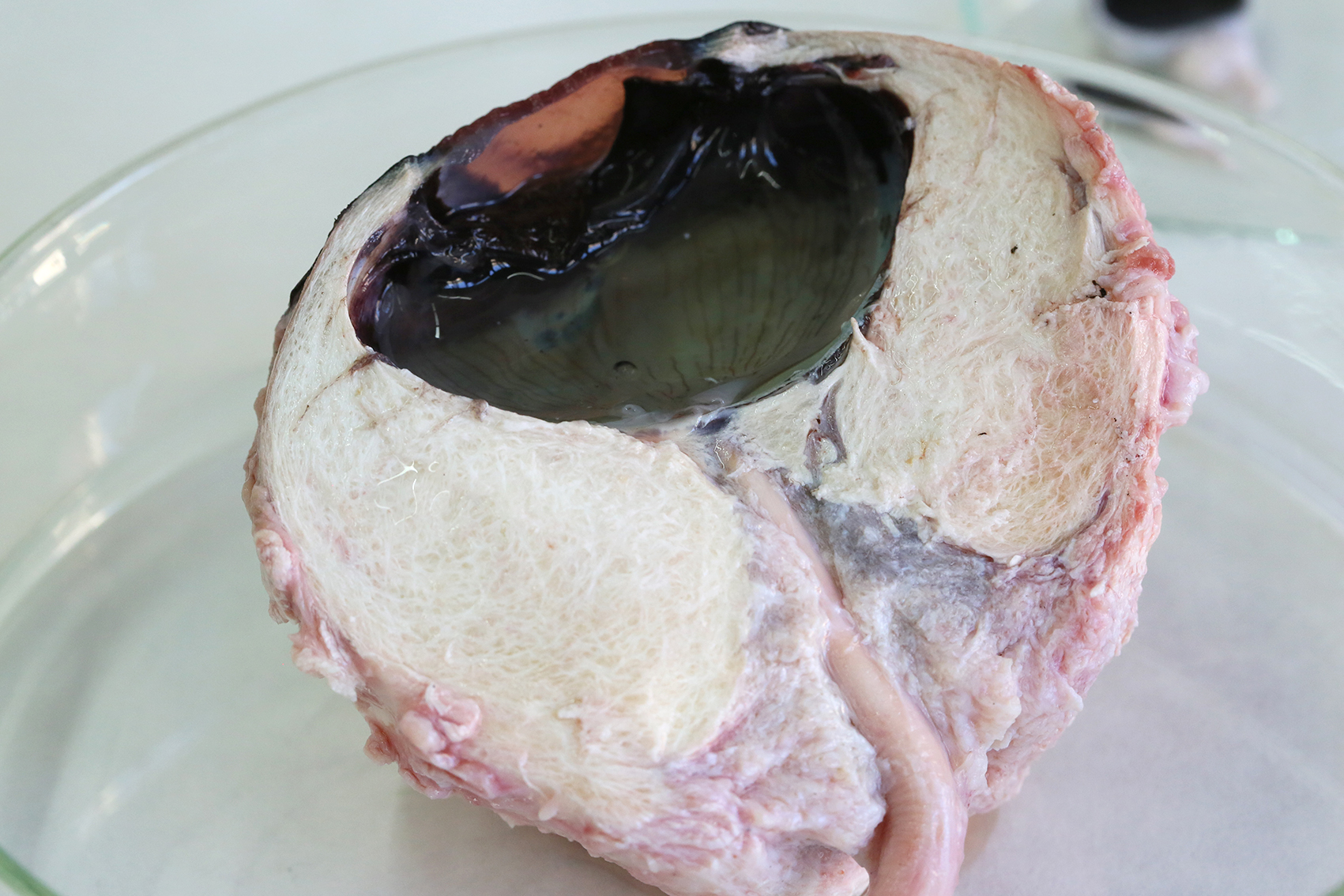
The researchers discovered cartilage and bone mass protecting the eyeball. (Photo: Laura López. UPV/EHU) -
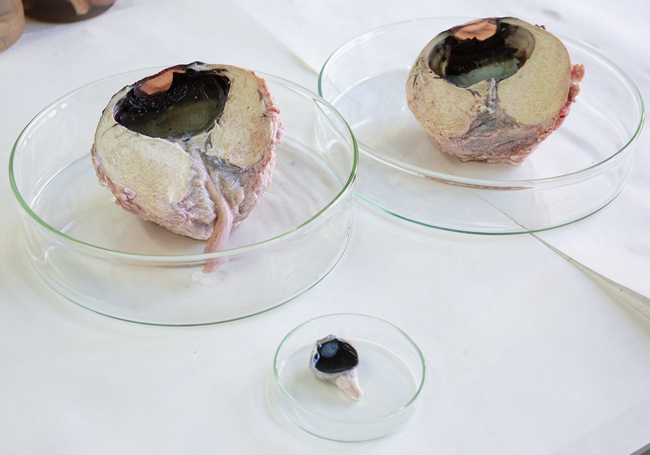
The dissected whale eye compared with a pig’s eye. (Photo: Laura López. UPV/EHU) -
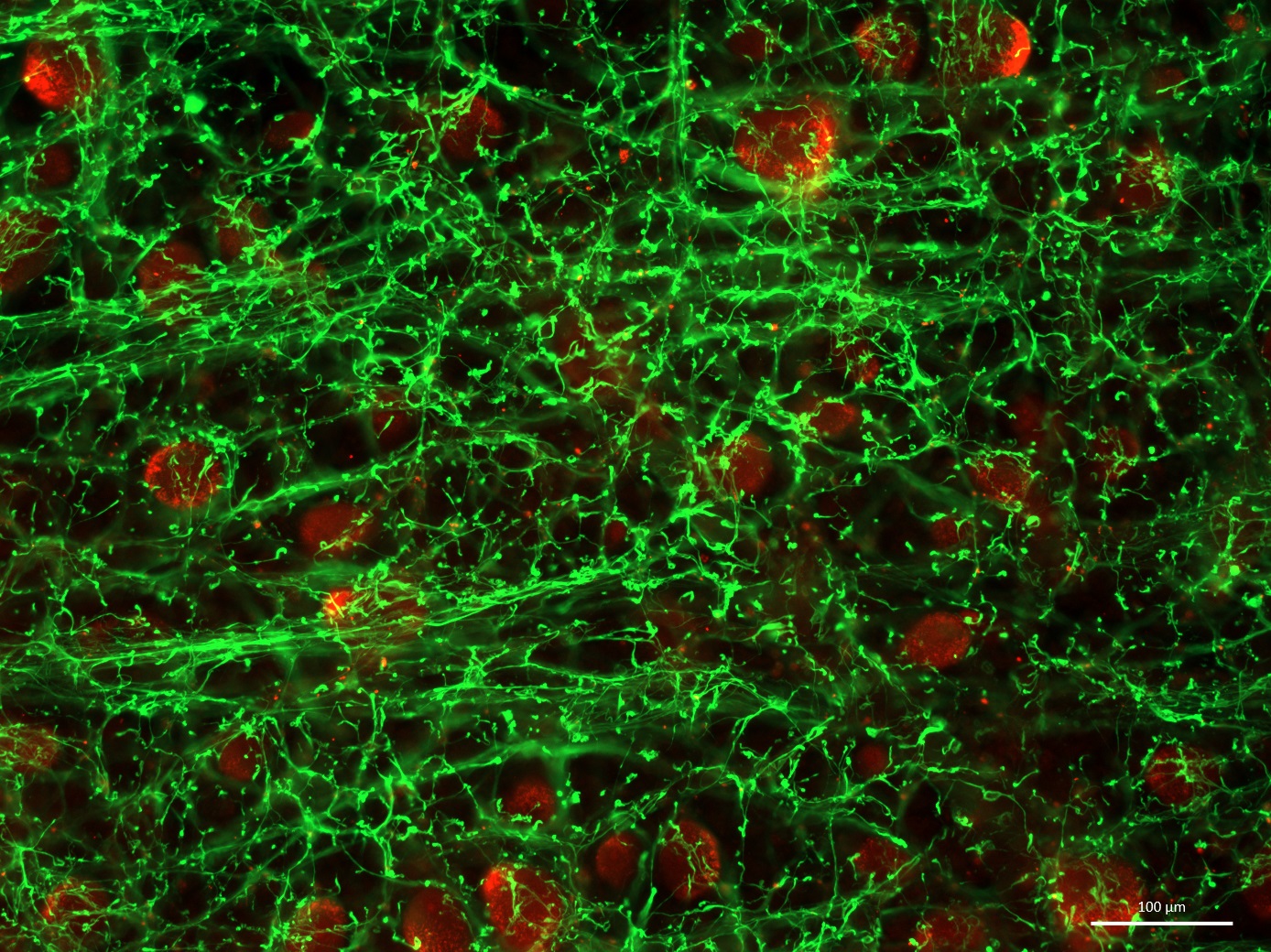
4. Whale retina neurons in red and cells beside them in green. They are twice the size of those of the human eye (Photo: Elena Vecino. UPV/EHU) -
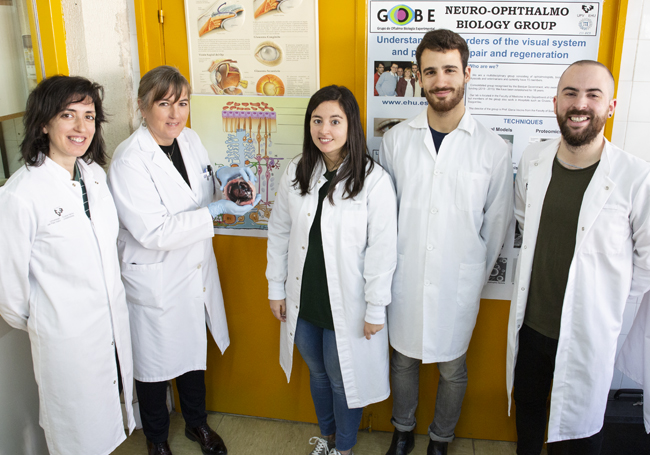
5. The researchers Noelia Rurafa, Elena Vecino, Xandra Pereiro and Miguel de la Fuente, together with the Biochemistry undergraduate Liher Garcia. (Photo: Laura López. UPV/EHU)



